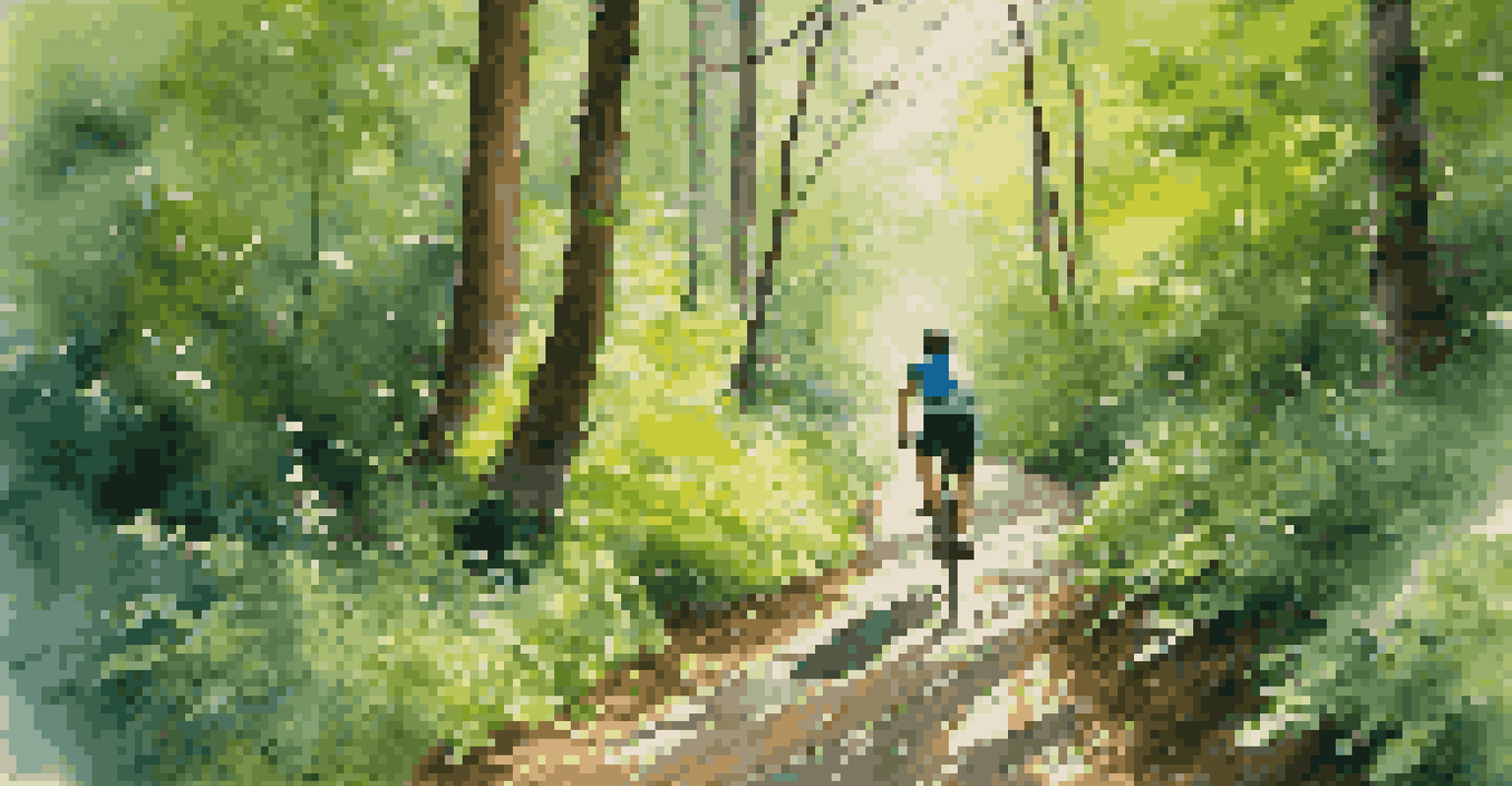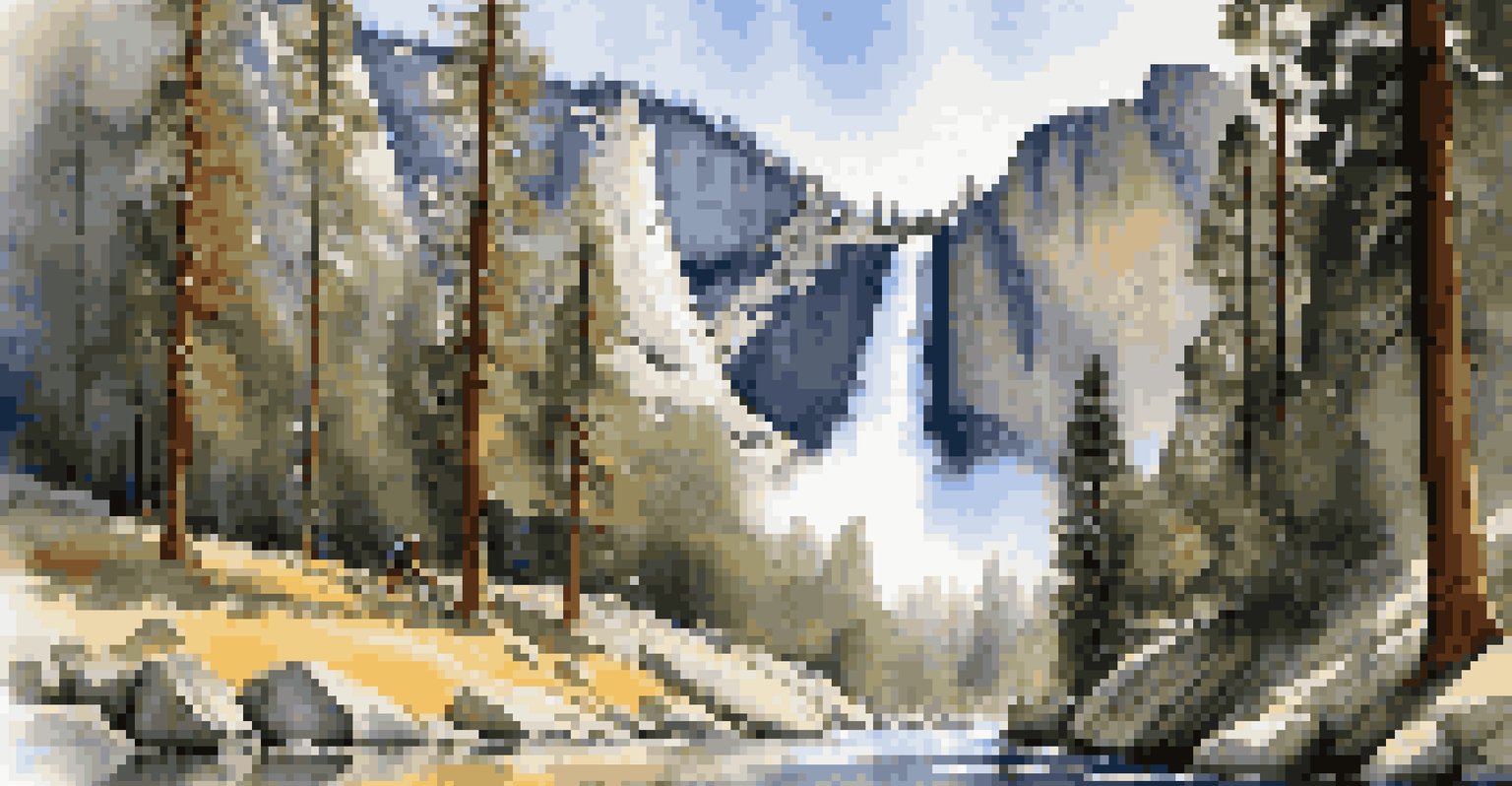Exploring National Parks by Bicycle: A Unique Experience

Why Choose Bicycling for National Park Adventures?
Bicycling through national parks offers a unique way to connect with nature. Unlike driving, cycling allows you to experience the sights, sounds, and smells of the wilderness up close. You can take your time, stop whenever something catches your eye, and truly immerse yourself in the beauty surrounding you.
The bicycle is a curious vehicle. Its passenger is its engine.
Moreover, cycling is an eco-friendly option that reduces your carbon footprint. It promotes healthier lifestyles while helping preserve the pristine environment of these national treasures. By choosing to bike, you're not just enjoying the parks; you're also contributing to their conservation.
Finally, biking provides a sense of freedom and adventure that walking or driving can't match. The wind in your hair and the thrill of navigating trails bring a rush of excitement that transforms a simple visit into a memorable journey.
Best National Parks for Bicycling
When it comes to cycling, not all national parks are created equal. Parks like Acadia National Park in Maine boast scenic bike paths along the coastline, offering breathtaking ocean views. Meanwhile, the expansive landscapes of Yellowstone provide numerous trails that cater to various skill levels, ensuring a fit for everyone.

Another fantastic option is the Great Smoky Mountains, where cyclists can navigate through lush forests and diverse wildlife. The varied terrain and stunning vistas make every pedal worthwhile. With dedicated bike lanes and trails, it's a cyclist’s paradise waiting to be explored.
Bicycling Connects You to Nature
Cycling allows for an immersive experience in national parks, letting you appreciate the sights, sounds, and smells of the wilderness up close.
Lastly, consider the iconic Yosemite National Park, which features routes that take you past majestic waterfalls and towering granite cliffs. The combination of challenging routes and picturesque scenery makes it an unforgettable biking experience.
Essential Gear for Biking in National Parks
Before hitting the trails, it's crucial to equip yourself with the right gear. A well-fitted helmet is non-negotiable for safety, while padded shorts can make long rides much more comfortable. Additionally, a sturdy bike suited for various terrains will enhance your biking experience significantly.
To get a taste of the world, you must ride a bike through it.
Don’t forget to pack essentials such as a first-aid kit, water bottles, and snacks to keep your energy up. A repair kit for flat tires and other minor issues is also a smart addition, as you might find yourself far from help during your adventure.
Lastly, consider bringing a map or a smartphone with offline navigation features. Cell service can be spotty in remote areas, so having a reliable way to find your way back is key to ensuring a worry-free experience.
Safety Tips for Cycling in National Parks
Safety should always be your top priority when biking through national parks. Always stay aware of your surroundings and watch for wildlife crossing the trails. Animals can be unpredictable, and a sudden encounter can catch you off guard if you’re not paying attention.
Additionally, keep an eye on weather conditions. National parks can experience rapid changes in weather, especially in mountainous regions. Being prepared with the right clothing layers can make a huge difference in your comfort level.
Essential Gear Enhances Safety
Equipping yourself with the right gear, such as a helmet and repair kit, is crucial for a safe and enjoyable biking adventure.
Lastly, always follow park rules and guidelines for cyclists. Many parks have specific regulations about where you can ride, so adhering to these rules ensures a safe and enjoyable experience for everyone.
Planning Your Biking Trip to a National Park
Planning is key to a successful biking trip in a national park. Start by researching the best time to visit to avoid crowds and enjoy the best weather. Each park has peak seasons, so timing your visit can enhance your experience significantly.
Next, identify the trails you want to explore based on your skill level and the type of biking experience you seek. Some parks offer easy, scenic routes, while others provide challenging climbs for experienced cyclists. Having a clear plan allows you to maximize your time on the trails.
Finally, consider accommodations in advance, whether you choose to camp or stay in nearby lodges. Booking early can provide you with the best options and ensure you’re well-rested for your biking adventures.
Food and Hydration Tips for Biking
Staying fueled and hydrated is essential for any biking adventure, especially in national parks. Make sure to carry plenty of water, as staying hydrated keeps your energy levels up and helps you avoid fatigue. Using a hydration pack can make sipping on the go a breeze.
As for food, opt for energy-boosting snacks like trail mix, granola bars, or fruit. These options are not only easy to pack but also provide the necessary fuel without weighing you down. Eating small amounts frequently can help maintain your energy throughout the ride.
Plan for a Successful Trip
Researching trails, weather, and accommodations in advance can significantly enhance your biking experience in national parks.
Lastly, consider planning your meals around local dining options if you're staying near park facilities. It’s a great way to experience the local culture while treating yourself to a hearty meal after a long day of cycling.
Capturing Memories: Photography Tips While Biking
One of the joys of biking through national parks is the stunning vistas that await you. Capturing these moments can be a rewarding experience, so consider bringing a lightweight camera or using your smartphone to document your journey. Look for unique angles and natural framing to make your photos stand out.
When photographing landscapes, try to shoot during the golden hours—early morning or late afternoon. The soft light during these times enhances colors and adds depth to your photos, making them truly breathtaking.

Lastly, don’t forget to capture the little moments—your bike against a stunning backdrop, a close-up of a flower, or even fellow cyclists enjoying the ride. These candid shots often tell the best stories and bring your adventure to life long after the trip is over.